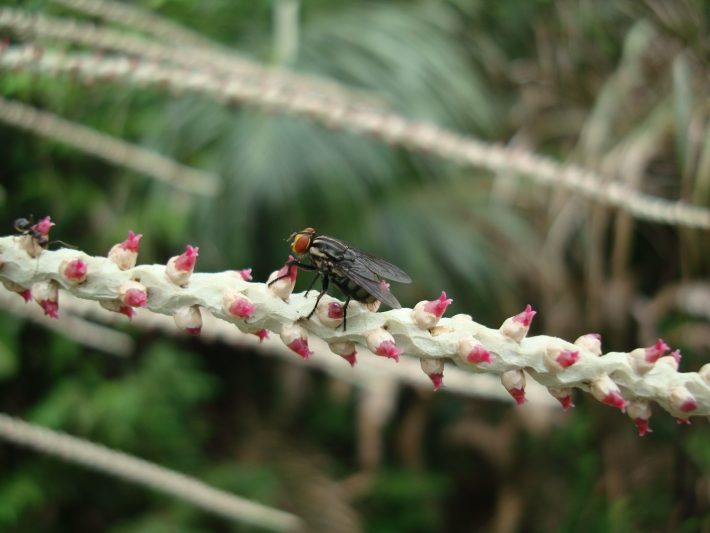Native forest habitats promote pollinators and fruit production of Açaí palm in the Amazon river delta
Brazilian Agricultural Research Corporation press release
Low impact farming methods benefit both pollinators and açaí fruit production, scientists from Embrapa (Brazilian Agricultural Research Corporation) and other Brazilian institutions have found.
In a new study published in the Journal of Applied Ecology, they show that diverse forest habitats provide safe havens for important pollinators and contribute to the environmental sustainability of this native Amazonian crop.

Dr Alistair Campbell, a post-doctorate researcher based at Embrapa and the Federal University of Pará (UFPA), and colleagues investigated the impacts of the rapid expansion in açaí palm cultivation in the Eastern Brazilian Amazon on pollinating insects and fruit production. They found that pollinators were essential for high fruit yield (four times lower when pollinators were excluded), and fruit production per plant was 25% higher in areas with diverse pollinator communities (high number of different pollinator species) compared to farms with low pollinator diversity.
Pollinator communities were studied in nine floodplain forests under differing levels of management (‘extensive’ or ‘intensive’ – based on the number of açaí trees per ha) and nine plantations in cleared upland habitats (18 areas in total). The researchers found that pollinator diversity was highest in extensively-managed forests, intermediate in plantations, and lowest in forest areas under intensive management.
The authors conclude that forest losses, through both the conversion of native floodplains into ‘açaí forests’ and deforestation in the wider landscape, had negative impacts on pollinators and açaí fruit production. Together, these findings highlight the importance of low impact farming not only for biodiversity, but also human wellbeing in the Amazon estuary region.
The açaí palm tree (Euterpe oleracea Mart.) is native to the floodplain forests of the Amazon river delta, where it is naturally abundant. Its dark purple, anti-oxidant rich fruits have long been a staple food of traditional Amazon communities but are now exported and sold throughout the world. To keep up with demand, over 1 million tonnes of fruit are produced annually in the Brazilian state of Pará, generating U$ 150 million for the local economy. This has been achieved by transforming native floodplain habitats into simplified ‘açaí forests’ and its cultivation in previously cleared upland areas.
The research published in the Journal of Applied Ecology states that:
- Açaí palm is pollinated by over 100 different types of insect, including bees, beetles, flies and wasps
- Fruit production was 25% higher in areas with high diversity of pollinators
- Floodplains under extensive management (mixed forest stands) supported the most diverse pollinator communities
- Bees are more dependent on forests than other pollinators
Read the full article (freely available for a limited time):
Campbell AJ, Carvalheiro LG, Maués MM, et al. Anthropogenic disturbance of tropical forests threatens pollination services to açaí palm in the Amazon river delta. J Appl Ecol. 2018;00:1–12. DOI: 10.1111/1365-2664.13086
Media contact:
Dr Alistair Campbell (Post-doctorate researcher, Embrapa Amazônia Oriental/Federal University of Pará (UFPA), Belém, Brazil), Tel: +55 (0)91 99325 1203, Email: alistaircampbell87@gmail.com
Like what we stand for?
Support our mission and help develop the next generation of ecologists by donating to the British Ecological Society.